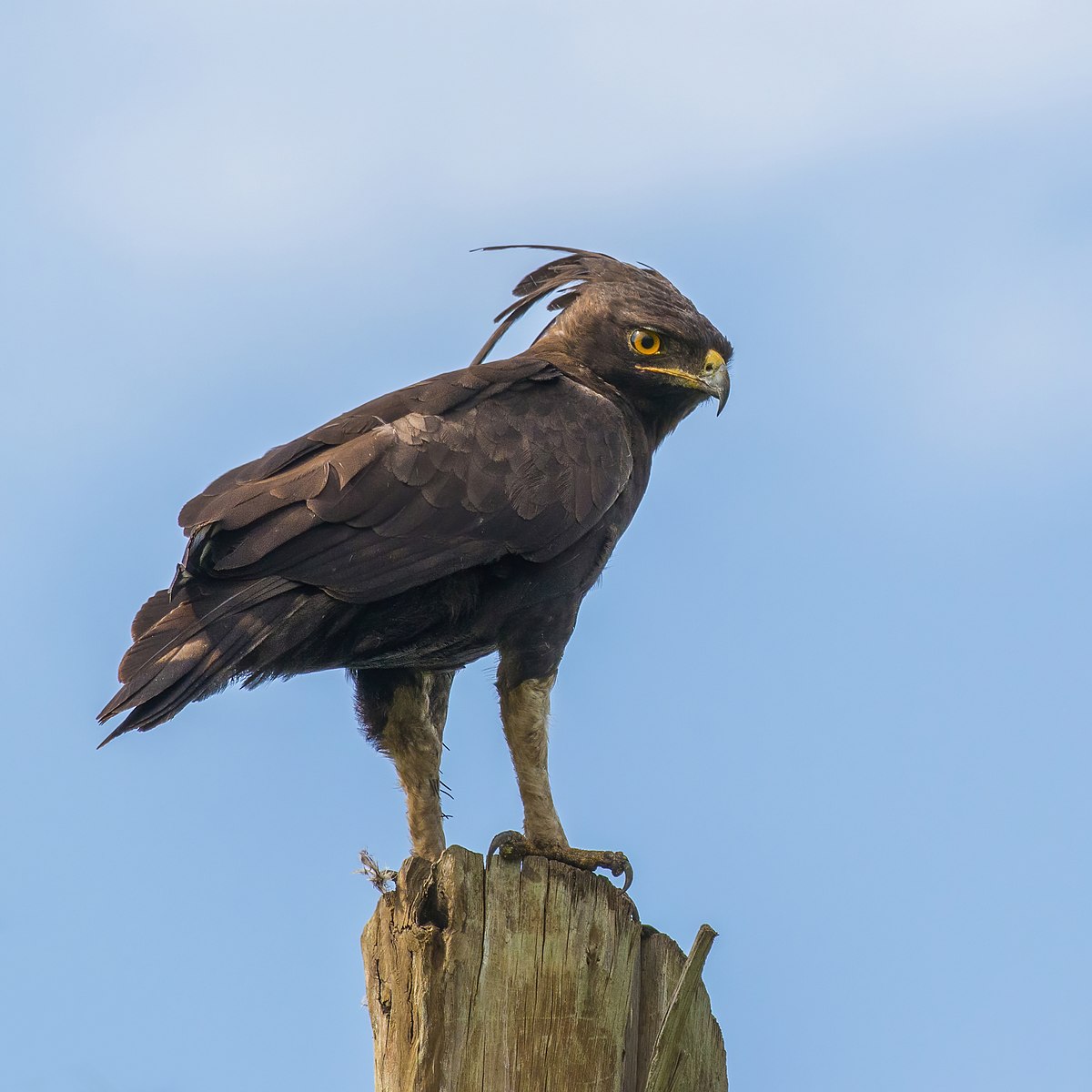Crested eagles, like many other birds of prey, rely on their sharp beaks for a variety of essential tasks, including hunting, eating, and defending themselves. However, there may be instances where these majestic birds break their beaks. Understanding the potential reasons behind this phenomenon can help us better appreciate the challenges these birds face in their natural habitats.
Trauma: A Common Cause of Beak Injuries
One of the primary reasons why crested eagles may break their beaks is due to trauma. These birds can experience beak injuries from collisions with various objects, such as windows, cars, or even falling from their nests. The impact of these incidents can result in beak fractures or other forms of damage, compromising the eagle’s ability to perform its essential functions.
Territorial Disputes and Defensive Behavior
 Image source: Long-crested eagle By Charles J. Sharp
Image source: Long-crested eagle By Charles J. Sharp
Crested eagles, being birds of prey, are known to engage in territorial disputes and defensive behavior. These interactions can sometimes lead to beak injuries, as the eagles may use their beaks to attack or defend themselves against potential threats. The intensity of these encounters can result in beak damage, affecting the eagle’s overall well-being.
Dietary Habits and Beak Wear
While crested eagles do not share the specialized dietary habits of some birds, such as the bearded vulture, they may still engage in activities that could potentially lead to beak damage. For example, some birds of prey may drop hard-shelled prey onto hard surfaces to crack them open, which could potentially cause beak wear over time.
Disease and Genetic Factors
In some cases, beak abnormalities in crested eagles may be attributed to underlying health issues or genetic factors. Certain diseases or genetic conditions can cause misalignment or deformities in the beak, which can impair the eagle’s ability to hunt, eat, or preen properly.
Adapting to Beak Injuries
When a crested eagle experiences a beak injury, the bird’s ability to perform essential tasks can be significantly impaired. However, these resilient birds have developed various adaptations to cope with such challenges.
Altered Feeding Strategies
Crested eagles with beak injuries may need to adjust their feeding strategies to accommodate their condition. They may switch to softer, easier-to-consume prey or find alternative ways to access their food sources.
Grooming and Preening Adjustments
Beak injuries can also affect an eagle’s ability to groom and preen its feathers effectively. In response, the bird may need to find alternative methods or rely on other body parts to maintain its plumage.
Behavioral Adaptations
Crested eagles with beak injuries may also exhibit behavioral changes, such as becoming more cautious or avoiding certain activities that could further exacerbate their condition.
Seeking Professional Assistance
If you encounter a crested eagle with a broken beak, it is crucial to contact a local wildlife rehabilitation center or a qualified wildlife professional for assistance. These experts can provide the necessary care and treatment to help the bird recover and potentially return to its natural habitat.
Conclusion
Crested eagles, like many other birds, face various challenges in their natural environments, including the potential for beak injuries. Understanding the underlying reasons behind this phenomenon, such as trauma, territorial disputes, dietary habits, and health issues, can help us better appreciate the resilience and adaptability of these magnificent birds. By working with wildlife professionals and supporting conservation efforts, we can ensure the continued well-being of crested eagles and other avian species.
References:
– How Do Birds Survive with Broken Beaks?
– Gravity Gives These Birds the Drop to Crack Tough Foods
– Bird Beak Anatomy and Function

